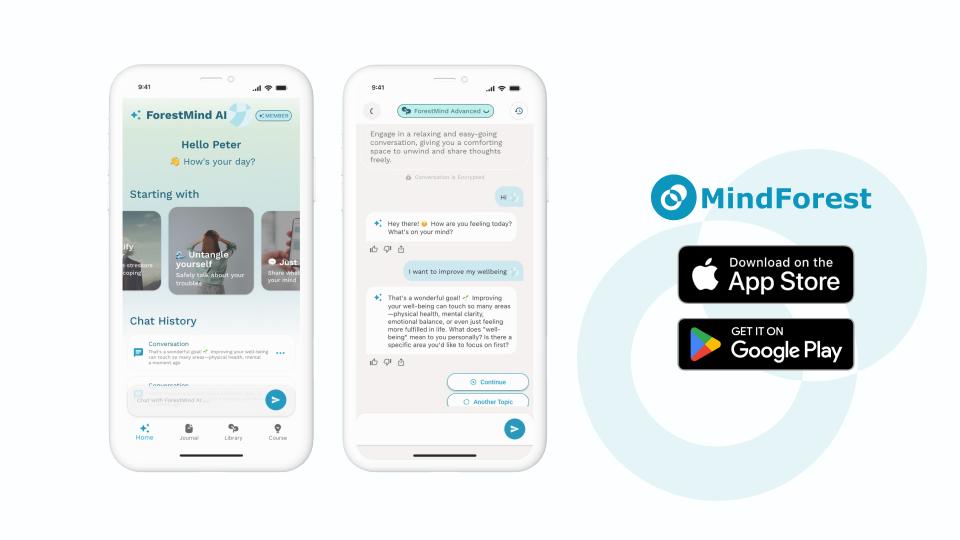
Ghosting and Avoidant Behaviour: Why We Pull Away and 3 Ways to Heal from It
Have you ever experienced ghosting? The two of you were chatting happily the night before, and the next day the person suddenly disappears, never replying again?
In a world where speed and productivity is prized above almost everything else, the idea of “slow living” can feel almost rebellious. Rooted in mindfulness, intentionality, and presence, slow living invites us to pause, breathe, and realign with what truly matters. But this is not just a whimsical lifestyle trend or a romanticised return to the “good old days” — it has real psychological weight. In fact, research in psychology increasingly supports the notion that slowing down may actually improve mental well-being, cognitive function, and emotional resilience.

In a world where speed and productivity is prized above almost everything else, the idea of “slow living” can feel almost rebellious. Rooted in mindfulness, intentionality, and presence, slow living invites us to pause, breathe, and realign with what truly matters. But this is not just a whimsical lifestyle trend or a romanticised return to the “good old days” — it has real psychological weight. In fact, research in psychology increasingly supports the notion that slowing down may actually improve mental well-being, cognitive function, and emotional resilience.
At its core, slow living is about doing less, more deliberately. It’s not about idleness or inefficiency, but about prioritising quality over quantity, and being mindful of how we spend our time and energy. Originating in part from the Slow Food movement in Italy during the 1980s — a reaction to fast food and consumer culture — the slow philosophy has since expanded to encompass everything from work and travel to relationships and daily routines.
According to psychologist Carl Honoré, author of In Praise of Slow (2004), slow living is “a cultural revolution against the notion that faster is always better.” It’s about balance — not total withdrawal, but resisting the urge to rush through life like it’s a checklist.
Why do we feel compelled to stay busy all the time? From a psychological perspective, part of it is cultural conditioning. Hustle culture, especially in Western societies, equates being busy with being valuable. Psychologist Barry Schwartz refers to this in his book The Paradox of Choice (2004), noting that the overwhelming pressure to constantly maximise our time and opportunities can lead to decision fatigue, anxiety, and even paralysis.
Moreover, research shows that chronic busyness can be a form of avoidance. A study published in Emotion (2014) found that people often prefer to stay distracted rather than sit alone with their thoughts — even when doing nothing would be more relaxing (Wilson et al., 2014). This discomfort with stillness can trap us in a cycle of overactivity that isn’t just exhausting but emotionally numbing.
Slow living provides an antidote. It reconnects us to what psychologists call “present-moment awareness” — the basis of mindfulness. Jon Kabat-Zinn, founder of Mindfulness-Based Stress Reduction (MBSR), defines mindfulness as “paying attention in a particular way: on purpose, in the present moment, and non-judgementally.” Mindfulness has been shown to reduce symptoms of anxiety and depression, improve attention, and increase psychological flexibility (Keng, Smoski, & Robins, 2011).
Another key benefit of slow living is its positive impact on cognitive function. Neuroscience suggests that downtime is essential for mental processing. The brain’s “default mode network,” active during rest, plays a role in memory consolidation, creativity, and self-reflection (Raichle et al., 2001). When we are constantly task-switching and multitasking — a hallmark of the fast-paced life — we disrupt this restorative mode, which can ultimately impair decision-making and emotional regulation.
Psychologist Susan David argues that emotional agility — the ability to experience thoughts and emotions in a mindful, values-driven way — is a predictor of long-term mental health and success (David, 2016). Slow living creates the space necessary for this kind of emotional self-awareness. When we are rushing, our sympathetic nervous system (the fight-or-flight response) is often activated, keeping us in a state of low-grade stress. By contrast, slowing down activates the parasympathetic nervous system, which promotes relaxation and emotional balance (Porges, 2011).
This can also improve our relationships. When we live slowly, we listen better, speak more thoughtfully, and are more emotionally available — all traits associated with higher emotional intelligence (Goleman, 1995).
So, how can we integrate slow living into our daily lives without quitting our jobs and moving to a cabin in the woods?
Notice your patterns of rushing — the mindless scrolling, the back-to-back scheduling, the urge to multitask. Awareness is the first step to change.
Focus on one task at a time. It sounds simple, but the benefits to mental clarity and stress reduction are significant (Rosen et al., 2013).
Constant connectivity fuels the illusion that we must always be available. Designate screen-free time, especially in the mornings and evenings, to reclaim mental space.
Whether it’s preparing a meal, going for a walk, or simply having a conversation, approach it with your full attention. This “savouring” enhances wellbeing and gratitude (Bryant & Veroff, 2007).
Ironically, we often need to plan for slowness. Blocking out white space in your calendar can protect your time for rest and spontaneity.
Slow living is not just a productivity hack or wellness trend — it’s a values-based shift. It encourages us to ask: what kind of life do I want to live? What do I want to pay attention to? What truly matters?
Existential psychology echoes this sentiment. Viktor Frankl, Holocaust survivor and author of Man’s Search for Meaning (1946), argued that purpose is essential to human wellbeing. Slow living creates the space to reconnect with that purpose, rather than getting lost in a flurry of obligations.
In many ways, slow living is less about changing what we do and more about changing how we do it. It is a conscious choice to resist the pull of urgency and choose presence over pressure, depth over breadth. Psychologically, this isn’t just beneficial — it’s necessary.
As the poet Mary Oliver once asked, “Tell me, what is it you plan to do with your one wild and precious life?” Perhaps the answer begins not with doing more, but with doing less — more slowly, more mindfully, and more meaningfully.
Embrace slowness, mindfulness, and emotional wellbeing with MindForest, your digital companion for creating a more intentional, peaceful, and fulfilling life.

Find your balance with personalised support grounded in psychology. ForestMind helps you slow down, manage stress, and build emotional resilience—just like adopting the slow living mindset in your daily routine.
Pause and reflect. The Insight Journal invites you to capture small moments of joy, track your feelings, and cultivate present-moment awareness—key practices for embracing slow living and reducing overwhelm.
Discover what truly matters to you. These psychology-based tools help you explore your emotional patterns, values, and personal triggers—supporting a lifestyle centred on intention, simplicity, and wellbeing.
Download MindForest today and start your slow living journey towards mindfulness, clarity, and emotional calm.
Bryant, F. B., & Veroff, J. (2007). Savoring: A New Model of Positive Experience. Psychology Press.
David, S. (2016). Emotional Agility: Get Unstuck, Embrace Change, and Thrive in Work and Life. Avery.
Goleman, D. (1995). Emotional Intelligence. Bantam Books.
Honoré, C. (2004). In Praise of Slow: How a Worldwide Movement is Challenging the Cult of Speed. Orion.
Kabat-Zinn, J. (1994). Wherever You Go, There You Are: Mindfulness Meditation in Everyday Life. Hyperion.
Keng, S.-L., Smoski, M. J., & Robins, C. J. (2011). Effects of mindfulness on psychological health: A review of empirical studies. Clinical Psychology Review, 31(6), 1041–1056.
Porges, S. W. (2011). The Polyvagal Theory: Neurophysiological Foundations of Emotions, Attachment, Communication, and Self-Regulation. Norton.
Raichle, M. E., et al. (2001). A default mode of brain function. Proceedings of the National Academy of Sciences, 98(2), 676–682.
Rosen, L. D., et al. (2013). The distracted student mind: Enhancing its focus and attention. Phi Delta Kappan, 95(4), 22–27.
Schwartz, B. (2004). The Paradox of Choice: Why More Is Less. Harper Perennial.
Wilson, T. D., et al. (2014). Just think: The challenges of the disengaged mind. Science, 345(6192), 75–77.
Discover practical psychology tips you can apply to your everyday life. From building resilience to improving relationships and finding work-life balance, our blog brings expert-backed insights that help you grow.

Have you ever experienced ghosting? The two of you were chatting happily the night before, and the next day the person suddenly disappears, never replying again?

This article breaks down the psychology of nonchalance, signs of a nonchalant dater, the debate nonchalant vs chalant, and what truly matters when forming modern relationships.

Have you ever felt so intensely drawn to someone that you couldn’t stop thinking about them—imagining every possible interaction, decoding every message, overanalysing every glance? If so, you may not be experiencing love, but something more specific: limerence.
Download MindForest and turn these insights into action. Get personalized support from ForestMind AI Coach, track your progress, and unlock your full potential.